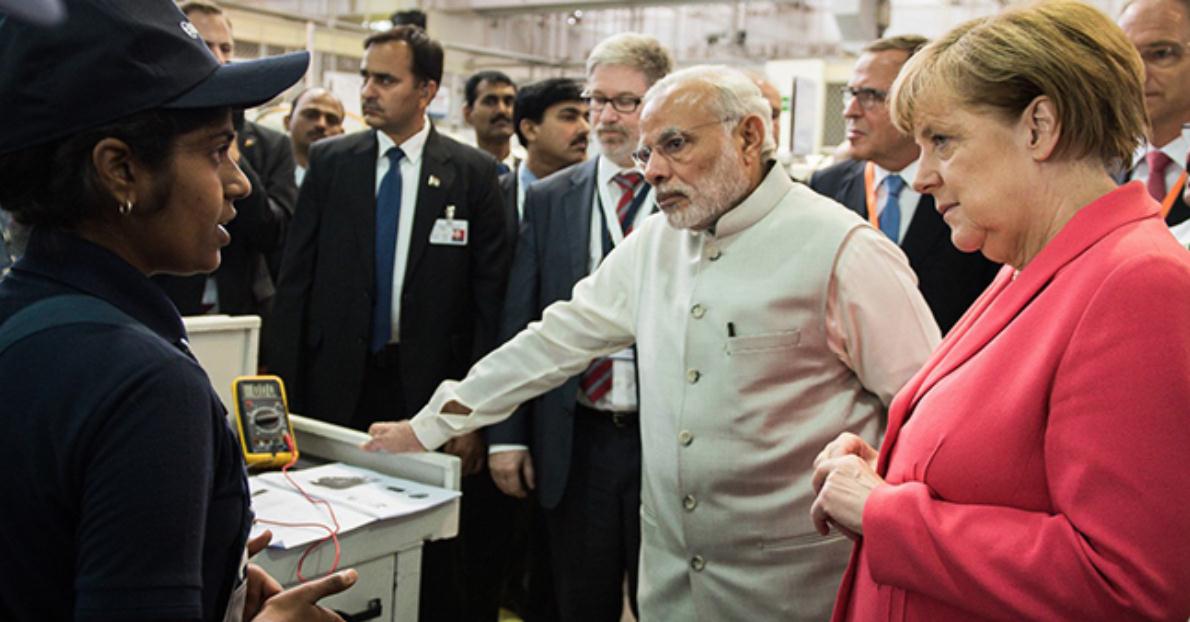The German shipping and trade sector is eyeing the Asia-Pacific region – the “high-growth markets,” as Germans like to say – for greater trade in an attempt to cushion itself against any possible decline in trade with the United States.
Future growth, according to the Hamburg-based German Business Council for the Asia-Pacific, will come from Asia and, particularly, from the Asian giants – China and India.
This realization was widely prevalent in German trade circles even before the election of Donald Trump as the US president. Trump’s election has, however, lent an urgency to the German efforts to meet the new challenges.
Indeed, the northern Germany port of Hamburg portrays itself as the European gateway to Asia, thanks to its lopsided dependence on trade with Asia. The German interest in Asia and, particularly, China and India, has intensified following what are called “discouraging signs” from Washington where Trump’s “America First” carries all the hallmarks of protectionism. Trump’s rejection of the Trans-Pacific Partnership (TPP) after protracted negotiations by his predecessor Barack Obama has sent the Germans scrambling for opportunities in the Asia-Pacific. “The reasoning is that markets with large populations provide a huge consumer base. The need for further development, particularly in India, has ratcheted German interest,” says Otto Schwind, a German exporter based near Frankfurt, who ships a wide range of machine tool products to Asia.
German Chancellor Angela Merkel unleashed her charm offensive with Asian leaders, many of whom visited Germany. It was no coincidence that she made a telephone call with Chinese President Xi Jinping, before she arrived in Washington for a meeting with Trump. At the CeBIT information technology trade fair in Hannover, she cordially received visiting Japanese Prime Minister Shinzo Abe.

Within a week, the leaders of India and China visited Germany, with Merkel rolling out a longer than usual red carpet for them. First to arrive, at the end of May, was Indian Prime Minister Narendra Modi. “India is an important growth market for Germany,” Merkel’s aides said on the eve of Modi’s arrival. Trade between the two has surged threefold within a decade to nearly US$20 billion, of which German exports to India amount to US$11.76 billion. Germany is India’s biggest trading partner in the European Union.
A few days later, Merkel received Chinese Prime Minister Li Keqiang. Germany’s 2016 exports to China amounted to US$89.5 billion, while imports from China touched US$110.3 billion.
“Trump’s tantrums,” as a German business magazine portrayed the president’s penchant to change many of his predecessor’s policies, have apparently unnerved the Germans. Two senior ministers in Merkel’s cabinet, Sigmar Gabriel and Brigitte Zypries, even wrote to the European Union’s Trade Commissioner Cecilia Malmstom, to “provide the sign for open markets and free trade, particularly with the important Asia-Pacific region.” Malmstrom herself embarked on a tour of Southeast Asia and, while in Manila, reached an understanding with the ASEAN group to revive talks about a free trade agreement between the two groups.
China is Germany’s biggest market, but it can also be a difficult terrain for German companies. The Germans attentively followed Xi’s speech at the World Economic Forum in Davos where he called for globalization and open markets. But many Germans, including the German ambassador in Beijing, Michael Clauss, have been asking when action would follow Xi’s words.
Paradoxically, although German products are not cheap, Germany’s foreign trade continues to boom with German exports reaching record levels. The global demand for German products is also attributed to the high quality standards and innovation that characterize German products.
“Our export sector benefits from the strong world economy. The Made-in-Germany label resonates well in the world markets,” says the executive director of the Federation of German Industry, Joachim Lang.
According to the Wiesbaden-based Federal Statistics Bureau, Germany’s global exports rose to US$138.9 billion, up 10.8% over March 2016, while imports in the same month rose to US$109.2 billion, up 14.7% over March 2016.
Indeed, in the first quarter of 2017, exports rose by 8.5% to US$375.5 billion and imports by 10% to US$304.6 billion over the year-earlier period. Anton Borner, the president of the German Foreign Trade Association popularly known by its German acronym BGA, was “surprised and amazed” how the German export sector has been “surmounting the global risks – be it political or economic.” However, he also warned that there were risks which could disrupt this trend and impact results in the course of the year.
Like other associations, the BGA fears that any hurdles imposed in the important US market by the Trump administration could touch a tender nerve of the German export sector.
After the “Trump shock,” German experts fear that exports to the US could suffer in the future. As a back-up plan, German trade has intensified its focus on the EU partner countries whose importance for the German trade is enormous and is expected to further increase.
German trade with the EU increased in 2016, while trade with the US declined.
Germany’s exports to the EU last year, according to the Federal Statistics Bureau, amounted to nearly US$832.4 billion, up 2.2% over the previous year (US$814.2 billion), while imports from the EU grew by 1.6% to US$649.2 billion.
By Manik Mehta
International Correspondent | Hamburg



